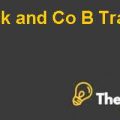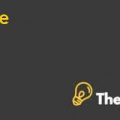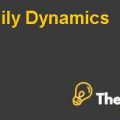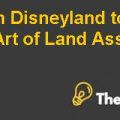MERCURY ATHLETIC FOOTWEAR: VALUING THE OPPORTUNITY
QUESTION 1
there are many significant pros and cons related to the acquisition of Mercury Athletic Footwear by AGI as discussed in the case, these are as follows.
- Mercury Athletic Footwear is engaged in the similar manufacturing operations as compared to the company in China.
- The acquisition would improve the company’s relations with its suppliers and retailers.
- The Acquisition would double the company’s revenues.
- about 42% of the company’s revenue is generated out of its sales in the footwear segment in which the AGI has a specialty, hence the acquisition would ultimately increase the company’s market share in that segment.
- As compared to the company the revenue growth rate of Mercury Athletic Footwear is relatively 4 to 3 times more so the acquisition could help the company to lower its cost and improve its profit margin.
- The merger could create synergies for the company to get benefited from about 58% of Mercury Athletic Footwear’s revenues generated out of its casual segment.
following are the cons related to the acquisition of Mercury Athletic Footwear by the company.
- Both the companies have different styles of running their business as the company is always focused on producing its conventional products whereas Mercury Athletic Footwear has often focused on changing its production on the basis of their customer’s requirements and demand.
- The demographical concentrations of both the companies is different from each other.
- there could happen operational issues with the merger because the style of managing the inventories of both the companies differs from each other.
- Because of the merger the company would require to engage in the Mercury Athletic Footwear ‘s women casual segment which may lead it to bear losses.
based on the analysis of advantages and cons of the acquisition it could be said that there are more advantages of the merger in terms of increased revenues and synergies so the company should go for this acquisition.
QUESTION 2
From the case the estimated revenue growth rate is about 3% but based o the calculation the actual growth rate of the revenues is determined to be 13% which is a lot higher than that of the estimated rate. So it could be analyzed that Liedtke’s estimations are very conservative and he has also stated things in a contradict manner. Like at times he focused on women casual line and then he also said to write it off.
it could also be analyzed that he supposed write off the women casual line and therefore their revenues and expenses were not assumed. That ultimately decreased the overall consolidated revenues which decreased the company’s value. Hence his projections could not be considered reasonable and the company should go up with the women’s line after the acquisition. We have made consolidated revenue estimations based on the 13% growth rate and incorporated the women’s line segment as well in the excel attachment.
QUESTION 3
In the Exhibit 3 the information of the competitors to the Mercury Athletic Footwear is given. We have used the equity betas of competitors from that information to calculate the company’s equity beta by taking average of the equity beta given. Hence the equity beta calculated for Mercury Athletic Footwear is 1.56.
QUESTION 4
To determine the cost of equity for the company we have use the capital asset pricing model approach. The risk-free rate of the company is given as 4.93 pc whereas 5% is the market risk premium given. By using the calculated equity beta, the cost of equity for the company is determined to be 12.72%.
QUESTION 5
To calculate the WACC of the company we have used the company’s debt to value ratio given as 20% and 40% tax rate. The 6% cost of debt as given in the case is the before tax rate. After the implementation of tax, the WACC of the company is determined to be 10.9%.
QUESTION 6
Based on the information given in the case and the WACC calculated the consolidated calculations for the company’s free cash flows, operating income and revenues has been done. Using the provided terminal growth rate of 3% the terminated value for the company is determined to $416,879, whereas its enterprise value is determined to be $508,427. On the basis of this the total value of the company is calculated to be 4583,831.
QUESTION 7
The lower the days sales of inventory (DSI) ratio the better it is for the company. After the acquisition the DSI ratio of the company is estimated to be reduced by 42.5 times. Because of this the working capital investment would be reduced so after incorporating the reduction of ratio the enterprise value is determined to be $1,663,791 depicting great synergies out of the acquisition....
MERCURY ATHLETIC FOOTWEAR VALUING THE OPPORTUNITY
case solution."}" data-sheets-userformat="{"2":14913,"3":{"1":0},"9":0,"12":0,"14":{"1":2,"2":3355443},"15":"\"open sans\", Arial, sans-serif","16":10}">This is just a sample partial case solution. Please place the order on the website to order your own originally done case solution.













